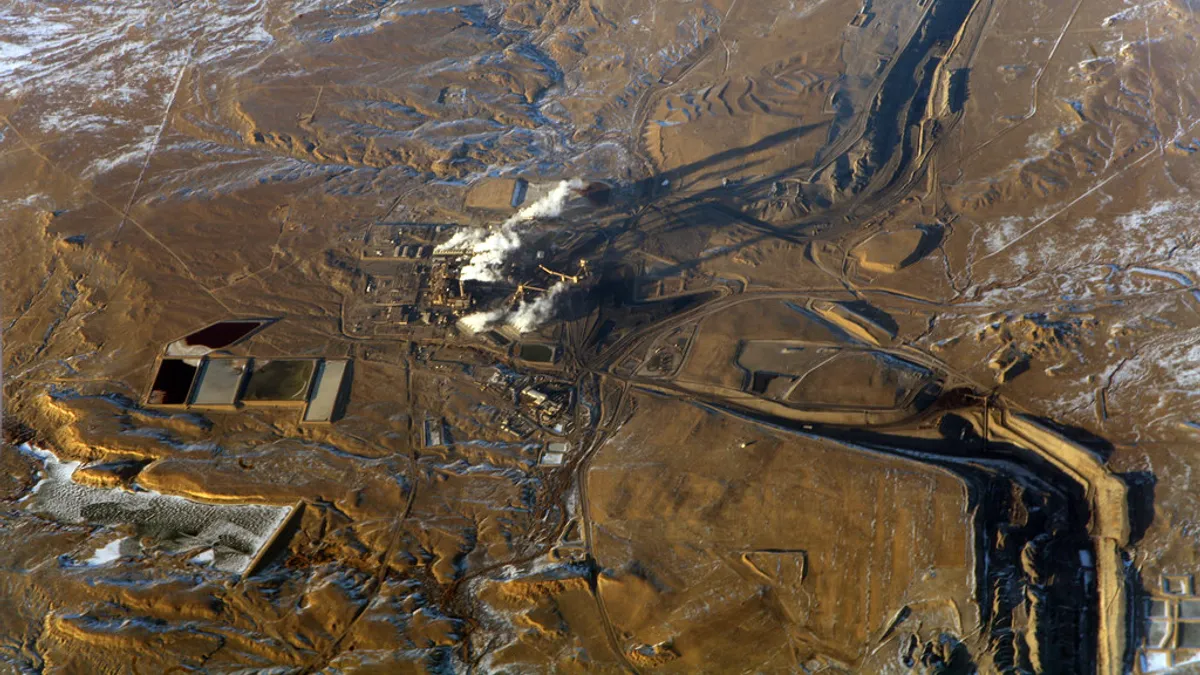Dive Brief:
-
New Mexico regulators on Wednesday voted to delay the decision on whether to approve two solar-plus-storage projects that the Public Service Company of New Mexico (PNM) had planned to pursue as part of the replacement generation for its San Juan coal plant.
-
The Arroyo and the Jicarilla projects would generate 300 MW of solar, 40 MW/160 MWh of battery storage and 50 MW solar and 20 MW/80MWh of battery storage, respectively. The two projects are part of PNM's broader plan to add 350 MW of solar capacity, 380 MWh battery storage and 280 MW of natural gas to replace its coal-fired generation.
-
Meanwhile, local energy company Enchant Energy is continuing to move forward with its plans to take over ownership of the 847 MW coal plant and retrofit it with carbon capture and storage technology. Enchant earlier this week announced it would receive $22 million in funding from the Department of Energy.
Dive Insight:
New Mexico in 2019 became the third state in the country to set a mandate for 100% carbon-free energy, in this case by 2045. The law also updated New Mexico's renewable portfolio standard, which now requires 80% of the state's energy to come from renewable resources by 2040, and 50% by 2030, putting the state on an aggressive path toward a majority-renewables portfolio.
PNM, the state's largest investor-owned utility, has plans to spend $733 million in order to replace its coal-fired generation, which includes the San Juan plant and the 200 MW Four Corners plant. But regulators determined this week that they could not approve two of the solar projects before taking a closer look at the utility's full resource plan.
Environmental groups and PNM were not happy with the decision, though both said they understood in part the commission's reasoning.
"PNM is encouraged by the Commission's focus on a comprehensive approach to determining the San Juan replacement resources as a whole. ... We have always advocated that a replacement generation portfolio should be looked at as one puzzle, understanding how all the pieces fit together," the utility said in a statement. "At the same time, we see the value of dealing with the two solar/battery projects to allow the fullest utilization of the pricing and renewable tax credits available."
The biggest downfall to the delay is the fact that the projects won't be able to secure the full value of the solar investment tax credit as it winds down, making the projects' future prices unknown.
"These were clearly the least cost projects, and any comprehensive [resource plan] that comes out is going to include these projects," Pat O'Connell, Western Resource Advocates senior clean energy policy analyst told Utility Dive. "Now the pricing is in doubt."
The commission will move forward on a decision once the full replacement portfolio is filed for approval. Currently, there are hundreds of projects bidding to secure a PPA with PNM, said O'Connell. "There are many opinions over what will be best to replace San Juan."
Meanwhile, Enchant and the city of Farmington, New Mexico, are continuing their efforts to save the San Juan plant through carbon capture and sequestration. The DOE funding agreement will be used in partnership with the New Mexico Institute of Mining and Technology to drill a test well near the San Juan power plant to see if its viable for carbon dioxide sequestration.
The test will be run a year from today, Peter Mandelstam, Chief Operating Officer of Enchant told Utility Dive, and if successful, will give the project another potential place to store carbon for enhanced oil recovery. But the project's "base case" scenario is still to ship captured carbon from San Juan to the Permian oil basin, meaning that if the DOE-funded drilling does not prove successful it will not derail the project.
"If the geology is wrong, there are certainly other places in New Mexico to study the geology," he said. "We have lots of options, but the base case remains to build a connector pipeline to Cortez and to sell it to the Permian Basin."
Whether or not the broader project is successful will have no impact on PNM, which will exit ownership of the plant in 2022, regardless. If the project comes to fruition the plant will operate as a merchant power plant, with prospective buyers scattered from Colorado to California, said Mandelstam.














